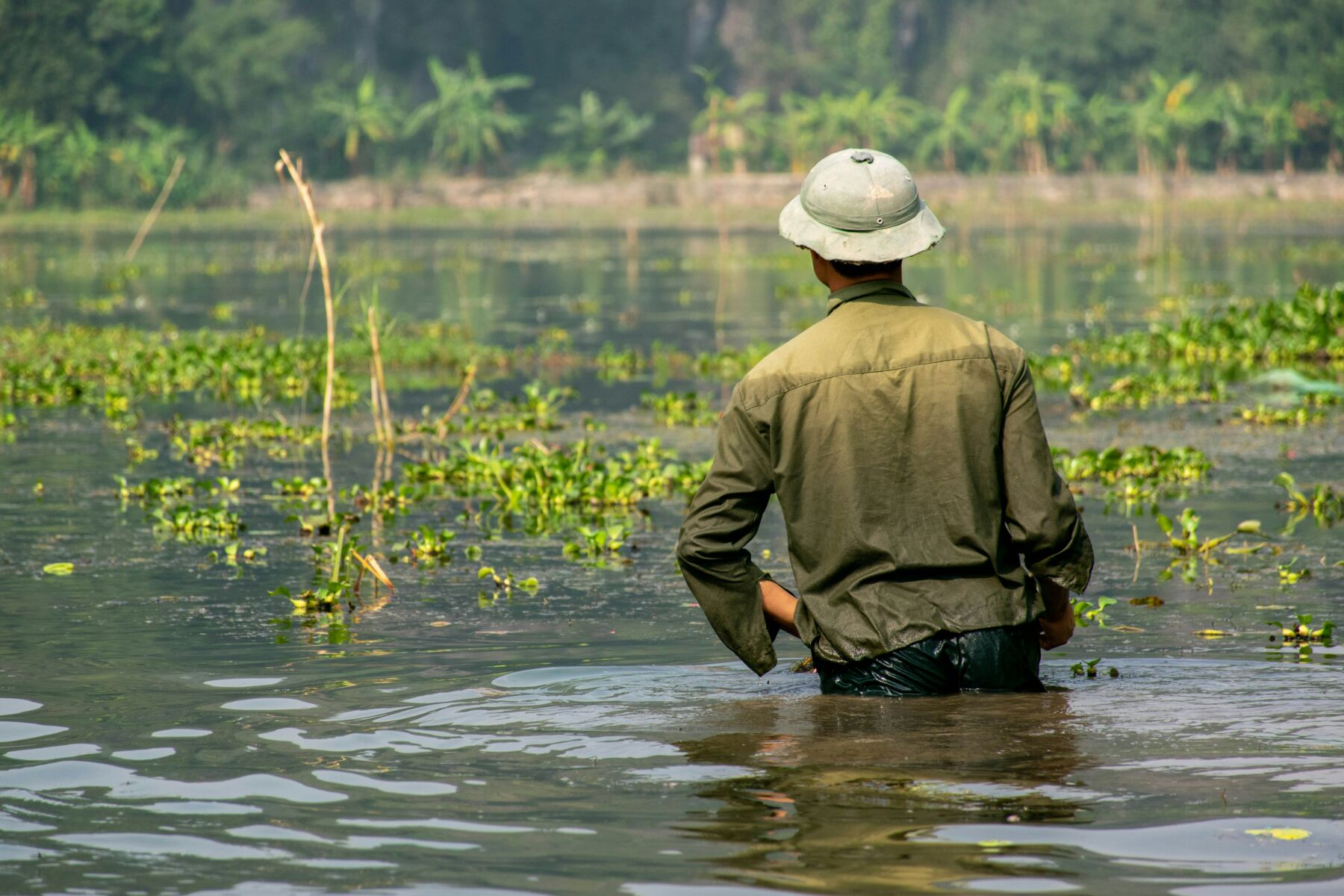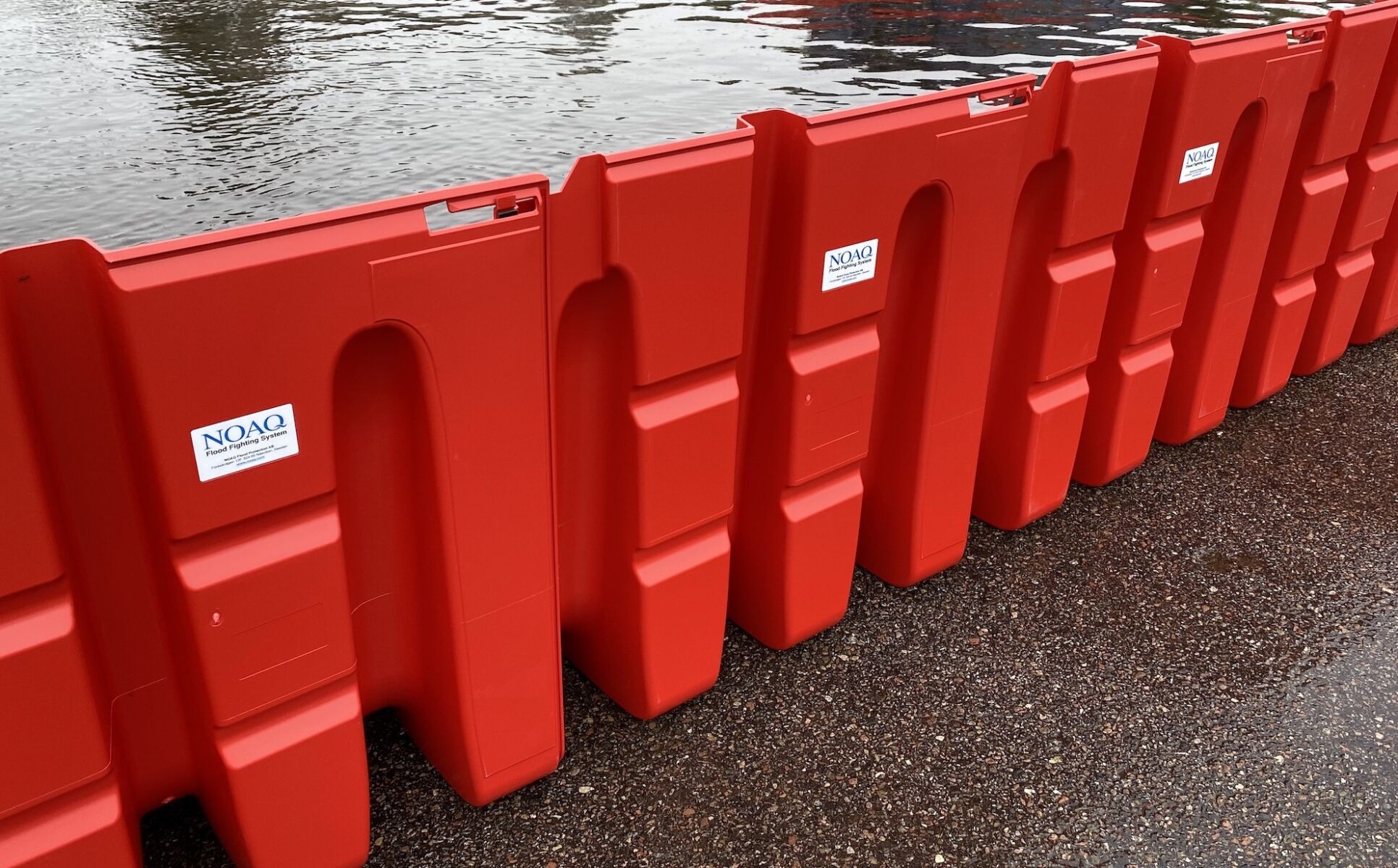Thailand’s innovative approaches to flood management

Flooding can result from various natural phenomena, including heavy rainfall, snowmelt, and storm surges, leading to significant impacts on communities, economies, and ecosystems. In Thailand, since mid-August, the flooding situation has worsened across different regions. As of now, the Department of Disaster Prevention and Mitigation has reported ongoing challenges in managing floodwaters due to continuous rain. Particularly in the northern and northeastern regions.
Traditional approach for managing floods in Thailand
Kaem Ling (monkey cheeks) project
Name inspired by nature’s resourcefulness, the Kaem Ling Project takes its cue from how monkeys store food in their cheeks. This innovative flood management system sese and utilises low-lying areas as temporary water reservoirs. By strategically “pocketing” excess floodwater, the project significantly reduces overflow on existing drainage infrastructure during intense flooding. This approach mitigates immediate flood risks and allows for controlled water release, turning a potential crisis into a managed resource.

Water diversion and dike construction
Thailand flood management has been identified as two key elements water diversion and dike construction. Extensive networks of carefully engineered canals now crisscross flood-prone regions, efficiently channelling excess water away from densely populated areas.
Complementing this, a series of state-of-the-art dikes stand as formidable barriers against rising waters. Additionally, newly constructed reservoirs serve as crucial buffers, capturing and storing torrential rainfall. This multi-faceted approach not only protects communities but also transforms potential devastation into a manageable, and sometimes beneficial, water resource.
Modern technological approach for managing floods in Thailand

Wall box system
Flood protection wall boxes, such as the NOAQ Boxwall, are innovative solutions for managing floodwaters during severe weather events. These sturdy barriers are engineered to withstand significant water pressure and feature a self-anchoring design that becomes more stable as floodwaters rise. Given the fact that it takes literally 10 seconds to install, these wall boxes effectively protect vulnerable infrastructure, homes, and communities from flood.
The deployment of these flood protection systems is a proactive measure crucial for flood-prone regions. Additionally, these barriers play a vital role in safeguarding public health by reducing the risk of contamination from floodwaters.
Real-time flood forecasting systems
Bangkok leads in flood management with a cutting-edge real-time stormwater forecasting system, the first of its kind globally. Using advanced machine learning and data integration, it predicts floods with exceptional accuracy and speed. This allows authorities to respond proactively, turning Bangkok into a resilient, tech-savvy city ready for future water challenges.
Community-based approach

Collaboration with official agency
Collaboration with government agencies is essential for effective community-based flood management. This partnership enables the sharing of resources, expertise, and information. In Mae Sot, for instance, discussions between the community and authorities resulted in a flood early warning system that uses mobile platforms for real-time updates. The success of Mae Sot’s mobile-based warning system demonstrates how combining technological solutions with community insights can create more effective and inclusive flood management practices, potentially serving as a model for other flood-prone regions. Such collaboration led to the development of an innovative flood early warning system that leverages mobile platforms to deliver real-time updates to residents.
Capacity building and training
Training aims to equip communities with the knowledge and skills needed for effective flood preparedness and response. These programs often involve workshops on flood risk management, emergency planning, and early warning system usage.
For instance, the Asian Disaster Preparedness Center (ADPC) has conducted sessions empowering communities to develop and implement their flood management strategies. If there was a case of emergency, these trained volunteers would know what to do and effectively rescue people.
Severe flooding in the North

Thailand’s flood management strategy exemplifies innovation born from necessity. Facing floods almost annually, the country has developed a unique approach that combines traditional methods with cutting-edge technology. Thailand’s flood management success comes from strong community-government collaboration, empowering locals through education and active participation.
The flooding was triggered by heavy rains, associated with Tropical Storm Yagi, which brought rainfall levels 2-3 times higher than normal for this time of year. This storm has resulted in persistent rain that has overwhelmed local rivers and drainage systems. Leading to loss of crops, more prone to water-borne diseases and many more. Some of the main provinces affected are
-
Chaing Rai
Districts: Khun Tan, Phaya Mengrai, Thoeng, Wiang Kaen, Koh Loi
Flood levels are reported to be declining.
-
Phitsanulok
Districts: Bang Rakam, Phrom Phiram
Flood levels still rising.
-
Sukhothai
Districts: Kong Krailat, Muang, Sawankhalok, Sri Nakhon, Sri Samrong, Sri Satchanalai
Flood levels still declining.
-
Nong Khai
Districts: Muang, Ratana Wapi, Sangkhom, Sri Chiang Mai, Tha Bo
Flood levels are declining.
Severe flooding in northern Thailand, particularly affecting provinces like Chiang Rai and Chiang Mai, has been attributed to a combination of extreme weather conditions and geographical factors. The floods have resulted in at least 10 confirmed deaths and affected over 73,400 families across multiple provinces. Many people are stranded, requiring urgent rescue efforts from local authorities. However local and Thai communities have demonstrated remarkable unity. Their collective efforts have led to impressive adaptations in response to the flooding.
Negative factors of flooding
Floods, while a natural phenomenon, carry a host of devastating consequences that challenge society, the economy, and the environment. Their destructive force can damage critical infrastructure and essential services. Health risks also surge as floodwaters spread contaminants or viruses, increasing the likelihood of waterborne diseases and leaving lasting psychological scars on survivors.
The communities unravel as residents face displacement, potentially leading to increased urban migration and its associated challenges. Environmentally, floods destroy landscapes, destroy habitats, and introduce pollutants into ecosystems and wildlife as well. While floods can offer some ecological benefits, their disadvantages overwhelmingly outweigh these.
Thailand’s journey in flood management demonstrates how crisiscan drive innovation. By turning annual floods from a threat into an annualy event, Thailand has positioned itself as a model for other flood-prone regions.The country’s approach is not just about infrastructure; it’s about empowering communities through education, training, and active participation in flood preparedness and response.
Latest Thailand News
Follow The Thaiger on Google News:


























